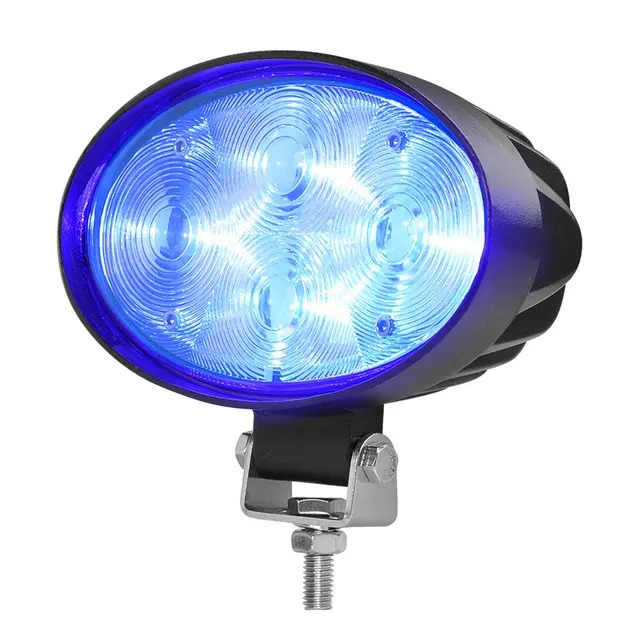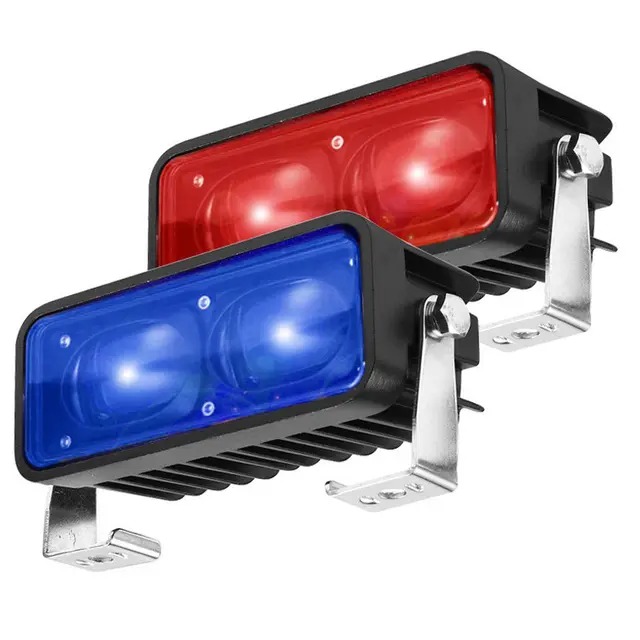
Introduction
In busy warehouse environments, where visibility is often limited and safety is paramount, the right lighting can make all the difference. Forklifts are indispensable tools in logistics, construction, and manufacturing, but without proper lighting, their operation can pose serious hazards. The forklift LED light is not merely an accessory—it’s an essential component of operational safety, regulatory compliance, and productivity.
Forklifts often operate in dimly lit or even pitch-dark spaces such as large storage facilities, cold storage warehouses, or outdoor loading docks at night. In these conditions, traditional halogen bulbs can fail to deliver sufficient visibility and durability. Enter LED lighting—a superior lighting solution known for energy efficiency, longevity, and high brightness output.
In this comprehensive guide, we will break down the exact lighting requirements for forklifts, explain how forklift LED lights help meet these standards, and discuss common questions about implementation and maintenance.
OSHA and ANSI Standards on Forklift Lighting
What Do the Regulations Say?
According to the U.S. Occupational Safety and Health Administration (OSHA), while specific lighting systems like LED lights are not always explicitly mandated, adequate visibility is a legal requirement. OSHA standard 29 CFR 1910.178 outlines that powered industrial trucks must be operated only in areas where sufficient lighting is available to ensure safe operation.
Additionally, ANSI/ITSDF B56.1 (Safety Standard for Low Lift and High Lift Trucks) recommends specific visibility distances, such as being able to see at least 3 meters (10 feet) ahead of the forklift’s path, which indirectly implies that adequate lighting must be installed.
LED lights are often the best choice to meet these requirements because they provide consistent brightness, resist vibration, and have long service lives—ideal for rough and repetitive forklift usage.
Types of Forklift LED Lights Required
Essential LED Lights for Safe Operation
Different operational environments and types of forklifts require varied lighting configurations. Here’s a table summarizing the main forklift LED light types and their functions:
| LED Light Type | Function | Placement |
| Headlights | Illuminate path ahead for forward driving | Front of the forklift |
| Tail lights | Signal presence and movement when reversing | Rear side of the forklift |
| Blue spot/arc lights | Warn pedestrians of approaching forklifts | Roof or chassis underside |
| Overhead lights | Provide ambient visibility around the forklift | Overhead guard or canopy |
| Side zone lights | Indicate forklift safety clearance zone | Left and right side panels |
| Strobe or flashing lights | Enhance forklift visibility in high-traffic areas | Top or rear area |
Each of these lights plays a crucial role not only in complying with safety regulations but also in preventing collisions, reducing downtime, and maintaining smooth logistics operations.

Benefits of LED Lights Over Traditional Bulbs
Durability, Cost, and Performance
Traditional halogen or incandescent bulbs may be cheaper upfront, but they fall short in terms of durability and performance when compared to LEDs. Forklifts are often exposed to constant vibrations, bumps, dust, and temperature changes. Halogen lights tend to burn out quickly or break due to filament failure under these conditions.
In contrast, LED lights are solid-state components, meaning they have no moving parts or fragile filaments. This makes them highly resistant to vibration and impact. Moreover, LEDs have an average lifespan of 30,000–50,000 hours, which drastically reduces the need for frequent replacements.
From an energy efficiency standpoint, LEDs consume significantly less power while delivering brighter and more focused light. This means your forklift’s battery can last longer between charges—improving uptime and productivity.
Forklift LED Light Placement and Angle Recommendations
Best Practices for Maximum Visibility
Proper light placement and angling can dramatically enhance both driver and pedestrian safety. Mounting lights too low may limit the range of illumination, while poor angling can cause glare or leave blind spots.
Here are a few best practices:
Headlights should be angled slightly downward to avoid blinding oncoming workers or drivers.
Blue warning lights should create a visible arc or dot on the ground several feet in front or behind the forklift.
Overhead canopy lights should illuminate the load area without casting heavy shadows.
Side zone lights must clearly outline the “no-go” zone to warn pedestrians from getting too close.
It's also important to periodically check the alignment and brightness output, as frequent use can result in shifts or reduced intensity over time.
Common FAQs About Forklift LED Lights
Do Forklifts Legally Need LED Lights?
Not specifically. The law requires sufficient lighting, but does not mandate LED. However, many facilities voluntarily choose LED lights due to their superior performance, lower maintenance, and cost-effectiveness over time.
How Bright Should Forklift LED Lights Be?
The brightness is typically measured in lumens. For forklift headlights, a lumen output of 1,000 to 2,000 lumens per light is generally sufficient for indoor applications. Outdoor use or high-speed forklifts may require 3,000 lumens or more.
Can LED Lights Interfere With Other Equipment?
High-quality forklift LED lights are designed with EMC (electromagnetic compatibility) in mind. Always select lights that are tested and compliant with industrial EMC standards to prevent signal interference with radios or scanning devices.
How Often Should Forklift Lights Be Checked?
A good rule of thumb is to inspect the lights daily as part of the pre-shift inspection checklist. This ensures lights are functional, properly aligned, and free of damage or dirt that may reduce effectiveness.

Future Trends in Forklift Lighting
Smarter, Safer, and More Efficient
The future of forklift LED light technology lies in smart integration and automation. Many modern forklifts now incorporate sensor-activated lights, which brighten only when the forklift is in motion, turns a corner, or approaches a pedestrian zone.
There is also a growing trend toward IoT-connected lighting systems, where LED lights are monitored remotely for performance, usage patterns, and preventive maintenance alerts. Some setups even allow light color or pattern customization to denote different types of cargo handling (e.g., hazardous vs. non-hazardous).
As sustainability becomes a growing concern, LED lighting continues to align perfectly with green warehouse initiatives, reducing energy consumption and carbon footprints.
Conclusion
Lighting isn’t just about seeing—it’s about being seen, staying safe, and maintaining workflow efficiency. Whether you're operating in a high-traffic distribution center or a quiet cold storage unit, the right forklift LED light configuration can dramatically improve operational safety and help comply with safety standards.From proper placement and light selection to periodic maintenance and future-ready upgrades, every decision you make around forklift lighting impacts the broader safety culture of your workplace.
























